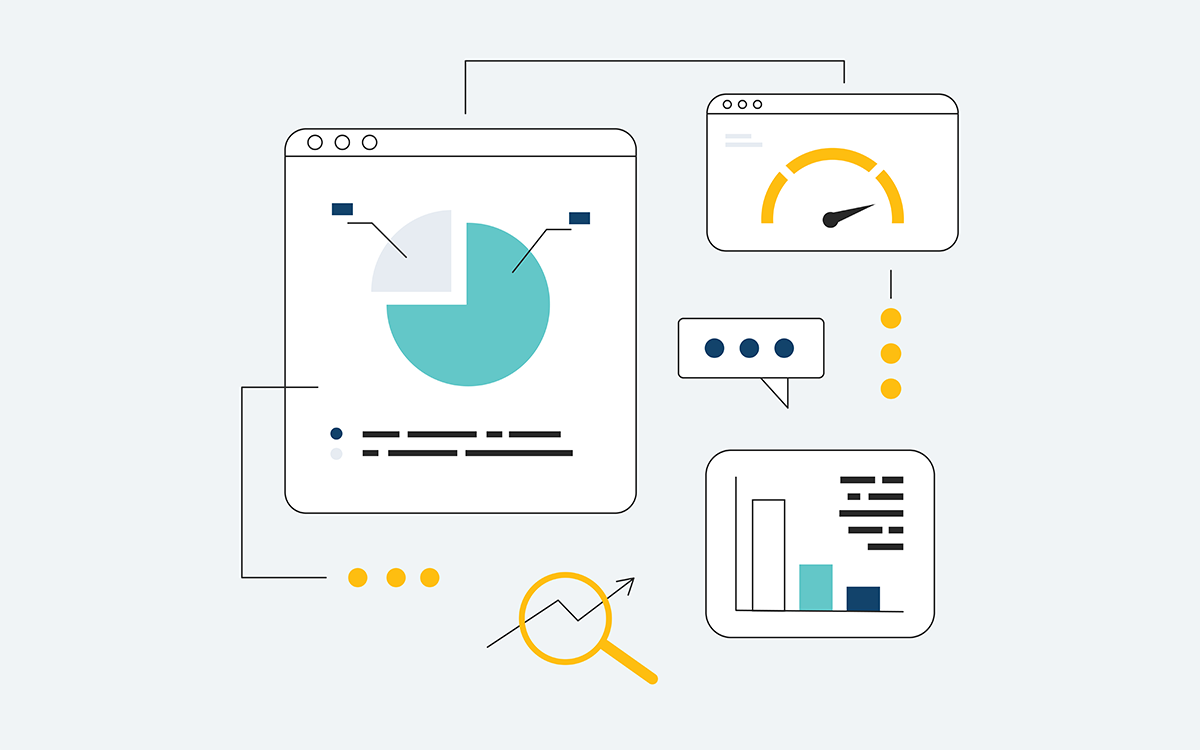Account management key performance indicators (KPIs) measure your sales team’s performance and effectiveness. Whether your organization has a dedicated account management team or each seller handles their own accounts, it’s important to set and monitor KPIs to see if you’re on the right track.
Put simply, strategic account management is about being responsive, solving problems, maintaining customer satisfaction, and building long-term relationships that lead to additional revenue.
If your sellers can carry out each of these, your sales team will be able to dig deeper into existing accounts, increase customer retention, and maximize the revenue potential of each.
Top 4 Account Management KPIs
Let’s look at the best way to set up KPIs for account managers or sales professionals. Your organization’s account management efforts should focus on four high-level goals:
- Retain customers
- Strengthen current relationships
- Expand customer relationships
- Grow revenue
Keeping these larger aims in mind, identify the specific, measurable objectives you want to achieve in each area. These will help you decide which metrics make the most sense to track.
Setting up goals and metrics will help each team member know where to focus, and they’ll be prepared when it’s time for their performance review.
Account Manager Goal #1: Retain Customers
If the Pareto principle, also known as the 80/20 rule, holds true for your business, it means that 80% of your revenue is generated by 20% of your customers.
It’s far more profitable to retain existing customers than to find new ones, so it’s key that your team keep customer satisfaction top of mind. Here are several common account planning KPIs for retaining customers.
- Retention Rate: Percentage of expiring contract renewals vs non-renewals (for subscription business models)
- Repurchase Rate: Percentage of customers who purchase again (for other business models)
- Customer Churn Rate: Percentage of customers who cancel their contracts or fail to renew them
- Support Requests: Number of inbound customer calls or emails reporting issues or requesting help
- Support Calls: Number of outbound calls made in response to requests for support
- Support Emails: Number of outbound emails sent in response to requests for support
- Time to Resolution: How long it took to resolve customer support tickets
- Product Engagement: Time or activity level of customers using the product (if trackable)
Account Manager Goal #2: Strengthen Current Relationships
You want your sellers to be seen as trusted advisors, not just vendors. This means understanding a buyer’s industry, market, and competitors enough so they can offer tailored recommendations, insights, and ongoing value.
Nurturing a long-term relationship requires monitoring each key account and making sure the customer feels supported and confident in working with your organization. Here are common KPIs for strengthening customer relationships.
- Customer Satisfaction Score: Rank on a scale of 1-10 for Net Promoter Score or other metric on customer satisfaction survey
- Customer Referrals: Number of new customers gained via referrals
- Strategic Calls: Number of calls made to offer best practices, strategic advice, consulting, etc.
- Strategic Emails: Number of emails sent to offer best practices, strategic advice, consulting, etc.
- Engagement Rate: Rate at which a customer responds to account management outreach, such as calls and emails, clicks on links provided, or downloads thought leadership
Account Manager Goal #3: Expand Customer Relationships
Expanding the number of relationships within a key account involves breaking into other divisions and gaining introductions to other stakeholders.
The silver lining of uncertain economic times is your customers are less likely to seek out new vendors (unless they have a problem) and are more likely to solidify relationships with existing vendors.
Take advantage of this by understanding who you know and don’t know in your accounts. Here are KPIs for expanding customer relationships.
- Internal Referrals: Number of new contacts in existing accounts
- New Contacts: Number of new contacts in other locations or business divisions
- New Opportunities: Revenue potential from internal referrals
Account Manager Goal #4: Grow Revenue
The ultimate goal of any account management effort is to increase revenue from current customers. It’s important to measure pipeline growth with key indicators or performance measures. Here are account manager KPIs for growing revenue.
- Customer Revenue Pipeline: Current opportunities in the sales pipeline
- Customer Upsell Revenue: Additional revenue achieved via upselling
- Customer Cross-Sell Revenue: Additional revenue achieved via cross-selling
- Contract Extension Revenue: Additional revenue achieved from contract extensions
Follow Good Account Management Practices
Remember: What you measure and incentivize will steer behavior. If a sales professional knows they’re being measured on upsell revenue, they’ll focus on that. If they know they’re being measured on referral appointments, they’ll aim there instead.
Pick your KPIs very carefully. If you set more than five KPIs, your sellers won’t know where to focus their efforts. Track and evaluate metrics on a monthly or quarterly basis and assess change over time to see if you’re getting the results you’re looking for.
Strategic Account Management Training
Use the account management KPIs that make sense for your organization to measure how effectively your team can retain, grow, and develop long-term relationships with key customers.
Remember that establishing these measures is just one part of sales performance management. To set your team up for success, support them with the sales training and tools to develop their own detailed account plans.
The Brooks Group’s Strategic Account Management training program teaches participants a practical process to develop each account, strengthen client relationships, and drive additional revenue for your company.




